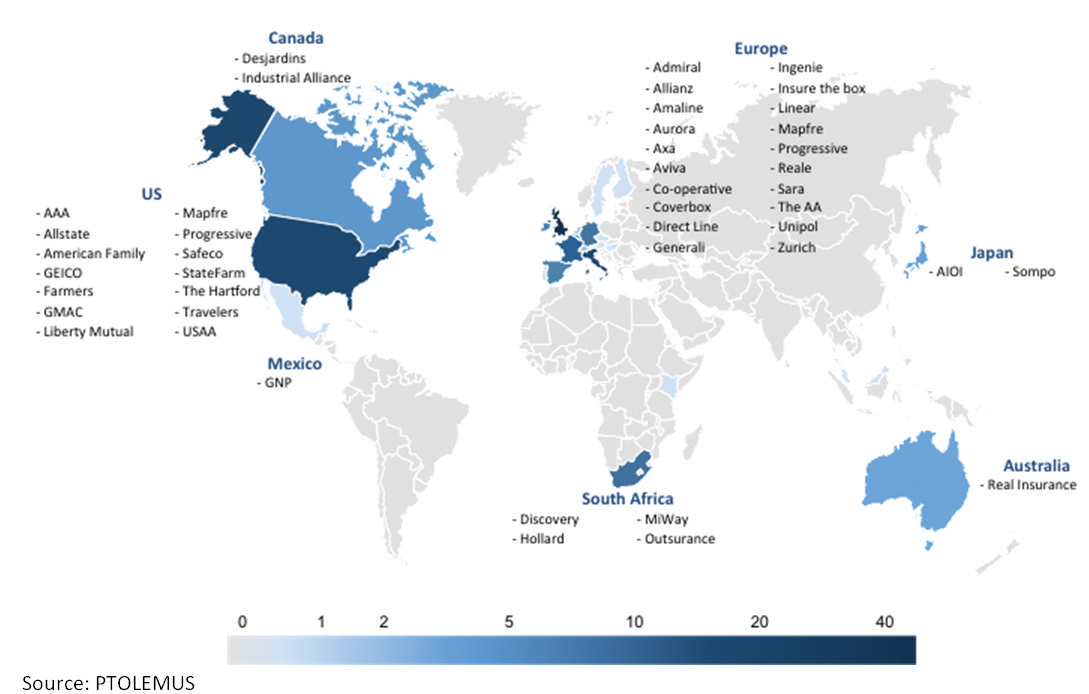The latest usage-based insurance global study from Ptolemus Consulting Group indicates that, since the release of the first study in 2012, the market share of usage-based insurance (UBI) policies has doubled. Ptolemus evaluates that five million vehicles are today covered by pay-as-you-drive (PAYD) or pay-how-you-drive (PHYD) policies. This is only six per cent of the global motor insurance market, yet represents US$4.8 billion in premiums.
The study analyses the drivers behind the sector’s rapid growth
The latest usage-based insurance global study from Ptolemus Consulting Group indicates that, since the release of the first study in 2012, the market share of usage-based insurance (UBI) policies has doubled. Ptolemus evaluates that five million vehicles are today covered by pay-as-you-drive (PAYD) or pay-how-you-drive (PHYD) policies. This is only six per cent of the global motor insurance market, yet represents US$4.8 billion in premiums.
The study analyses the drivers behind the sector’s rapid growth and the challenges ahead, together with a complete set of best practices to successfully launch new UBI services.
It provides an overview of the global UBI market today with four case studies and market size, together with an analysis of the insurance sector worldwide and the impact of UBI, with a synthetic analysis of the US filing process. The study also identifies the most successful UBI models and looks at which markets are most receptive to UBI, and how to increase customer acceptance where it has been implemented.
The September/October issue of1846 ITS International magazine has a feature article on user based insurance.
The study analyses the drivers behind the sector’s rapid growth and the challenges ahead, together with a complete set of best practices to successfully launch new UBI services.
It provides an overview of the global UBI market today with four case studies and market size, together with an analysis of the insurance sector worldwide and the impact of UBI, with a synthetic analysis of the US filing process. The study also identifies the most successful UBI models and looks at which markets are most receptive to UBI, and how to increase customer acceptance where it has been implemented.
The September/October issue of








